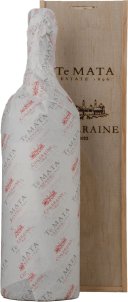Chateau Pichon-Longueville Lalande 2me cru classe
The history of Chateau Pichon-Longueville Baron is a tale of two estates. The chateau and vineyard known as Pichon Baron was given in dowry to the founders daughter when she married Jacques du Pichon Longueville. After the death of their descendent, the Baron Joseph de Pichon Longueville, in 1850 the estate was again divided - on his deathbed, he gave what became Chateau Pichon Baron to the men of his family, and what became Chateau Pichon Lalande to the women - resulting in, some say, more masculine and sensuous styles of wine respectively! Between the 1960s and the 1980s, the estate went through a period of rather lacklustre production - however, since 1990, they have been producing, according to many, some of the best wines in their history. The 2016 has earned high praise and glowing comparisons to their legendary 1990 Pichon Baron.
Chapelle d'Ausone Grand cru
Shafer Vineyards Hillside Select Stags Leap District Cabernet Sauvignon
SHAFER VINEYARDS Hillside Select Stags Leap District Cabernet Sauvignon, Napa Valley
Cardinale Cabernet Sauvignon
Chateau Mouton-Rothschild, 1ER CRU CLASSE Le Petit Mouton
The second wine of Chateau Mouton Rothschild was first released in 1993. Le Petit Mouton takes its name from a small house next to the main Chateau, the official residence of Baron Philippe Rothschilds wife and family. The Chateaus modern age began in 1922 producing vintages through what were, at the time, cutting-edge techniques; though seen as revolutionary at the time, many of these methods are still in use today. This includes the groundbreaking concept of bottling all wine on the estate, allowing for an unprecedented level of control over the Bordeaux sold from Mouton-Rothschild.
Te Mata Estate Coleraine Cabernet Merlot
Te Matas Hawkes Bay estate is a prestigious winery with a rich history, producing some of New Zealands most celebrated wines. If the Langtons Classification crossed the Tasman, Te Mata Coleraine would sit alongside Grange at its very pinnacle. Established, esteemed, outstanding vintage after vintage, the glowing adjectives come thick and fast.
Château Pavie Saint-Emilion Grand Cru Premier Grand Cru Classé
Schrader Cabernet Sauvignon RBS Beckstoffer To Kalon Vineyard
Guigal La Turque Côte Rôtie
The 2001 La Turque is a vineyard-designated wine from a parcel inside the lieu-dit Côte Brune. It is a blend of 93% Syrah and 7% Vigonier. Meaty and rich, laced with Asian spice, espresso, blackberries, and cherry. An earthy, powerful, tannic wine with a long, heady, rich finish. Give it at lease 2-5 years in the cellar, and drink before 2040. One of the finest wines in Dan Murphy's Cellar Release Range.
Les Forts de Latour Pauillac
Les Forts de Latour is the wonderful second label of the famous Château Latour of Pauillac. Les Forts lacks none of the legendary power and concentration of its elder brother although it is approachable at a much earlier age. Rich Cabernet influence dominates this wine that comes from Latour fruit that doesn't make the grand vin as well as the younger vine material. The 2009 is considered one of the truly great vintages in living memory and it is in these years that secondary wines like this Forst de Latour really shine. Value and pedigree all wrapped in one package!














